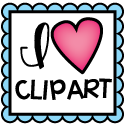Daily 5 - Chapter 3
Establishing a Gathering Place - Right now I'm thinking my "Gathering Place" will be in front of the "Smart Board" on a large area rug. We would have a whiteboard available for our focus lessons, anchor charts, poem and song charts, a chart rack and any other teaching materials needed handy in this area. This is a place where we gather to share. While working on the Daily 5 moving to the "Gathering Place" would provide the children with a break in their brain work and also allow for some movement time.
Good-Fit Books - Wow! Here's where I'm going to have to adjust my thinking from Title I a little bit. I always believed that if a child could read the text with 95% or higher accuracy it was a good-fit for them. However, Richard Allington (and he is a big guru in reading, and awesome to listen to) believes for an independent-level or good-fit book a child needs to be able to read with 99% accuracy. So, needless to say I will be rethinking my thinking!! I also plan on posting an "I Pick" chart for picking good-fit books (an example of chart is found on page 30 of text). I loved the "shoe" examples the authors shared. What a great visual for me, let alone the children!! I will be copy catting this one!
Setting Up Book Boxes - Whew! This is where I'm struggling a bit. I've thought about doing book baggies, but I'm not sure that's the way to go. I've also looked at the little magazine boxes offered through "Really Good Stuff." I love those, but then there's the problem of where to put them where they are also handy and available to the children. Any suggestions out there?? I do know I need to label my book collections like the example on page 35. I already have them organized this way, just not labeled. Another "to-do" item for this summer.
Anchor Charts or "I-Charts" - These charts are created together with the children and are used to help make learning or thinking permanent. They are displayed in the classroom where they can be referred to continually.
Short Intervals of Repeated Practice - Haven't we always heard "practice makes perfect?" We have children reread text to help improve their fluency, so it makes perfect sense to have them practice many times how to do the Daily 5 components. The authors share how important it is for children to hear (auditory), model (visual) and practice (kinesthetic) each of the components to help build their muscle memory.
Signals - It is so important to begin teaching children from the first day of school how to do things. The authors shared how they begin right away teaching the signal for them to gather at the "Gathering Place" making sure to explain the purpose for the signal. Again, an anchor chart might be helpful and also a constant reminder. They spend times practicing over and over and adding any new thinking to the anchor chart. What an excellent idea!! Why didn't I think of that?!
"Check-In" - I loved the quote from Debbie Miller (Reading with Meaning) by the way. "Eventually, I realized, of course, that nothing was wrong with 'these kids.' They didn't get it because I hadn't shown them how. I'd told them to be respectful, thoughtful, and kind, but I hadn't shown them what that looks and sounds like". We need to discuss with children what each skill looks like, model both the correct and incorrect way and then practice, practice, practice!!
Whew! So much information and so much to remember!
Monday, June 25, 2012
Subscribe to:
Post Comments (Atom)


































No comments:
Post a Comment